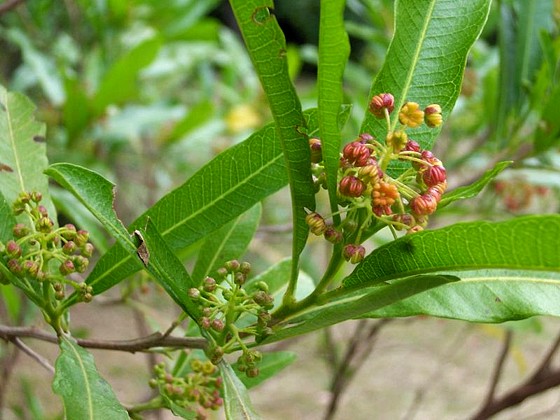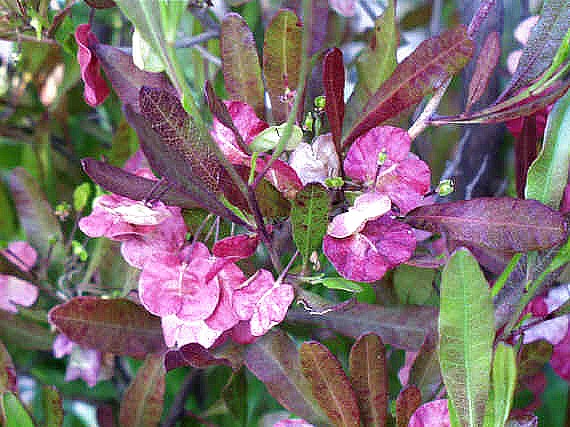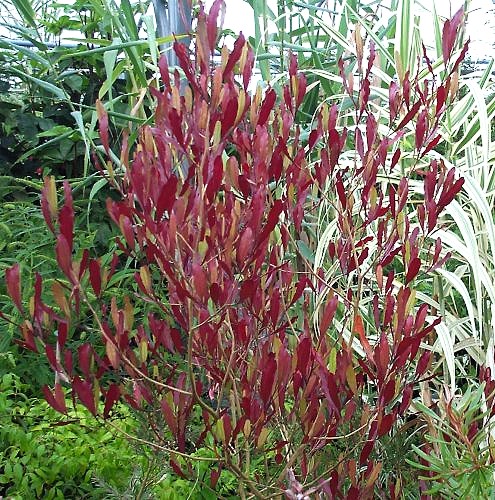Lessico
Rembert Dodoens
incisione di Theodor de Bry
(1528-1598)
da Bibliotheca chalcographica di Jean-Jacques Boissard - 1669
Dodonaeus in latino, Dodoneo in italiano. Medico e
botanico fiammingo (Malines, alias Mechelen, 1517 - Leida 1585), assai celebre per
i suoi lavori di botanica, specialmente per le Stirpium historiae pemptades
sex sive libri
XXX (1583) in cui sono contenute molte descrizioni di piante dal vero,
illustrate con buone tavole xilografiche. La sua preparazione gli valse
l’appellativo di Teofrasto![]() Olandese e Charles Plumier
Olandese e Charles Plumier![]() , valoroso botanico di Marsiglia (1646-1706),
gli dedicò il genere Dodonaea
, valoroso botanico di Marsiglia (1646-1706),
gli dedicò il genere Dodonaea![]() . È considerato il fondatore
dell'orticoltura nei Paesi Bassi.
. È considerato il fondatore
dell'orticoltura nei Paesi Bassi.
Nel 1581 venne pubblicata la sua opera Medicinalium observationum exempla rara insieme a
quella dallo stesso titolo di Alessandro Benedetti![]() :
Al eerder,
in 1581, was Medicinalium observationum exempla rara (een boek met de
uitzonderlijkste gevallen uit de jarenlange praktijk van Dodoens als arts)
verschenen, met als aanhangsel de Fysiologische tabellen, welke dertig jaar
tevoren al waren geschreven. Het boek met casussen, een kostelijk werk, vol
diepe geleerdheid en schrandere opmerkingen, beleefde ettelijke herdrukken,
maar dan zonder het aanhangsel over de fysiologie. Ook in
1581 verscheen een korte studie over de eland.
:
Al eerder,
in 1581, was Medicinalium observationum exempla rara (een boek met de
uitzonderlijkste gevallen uit de jarenlange praktijk van Dodoens als arts)
verschenen, met als aanhangsel de Fysiologische tabellen, welke dertig jaar
tevoren al waren geschreven. Het boek met casussen, een kostelijk werk, vol
diepe geleerdheid en schrandere opmerkingen, beleefde ettelijke herdrukken,
maar dan zonder het aanhangsel over de fysiologie. Ook in
1581 verscheen een korte studie over de eland.
http://plantaardigheden.nl.
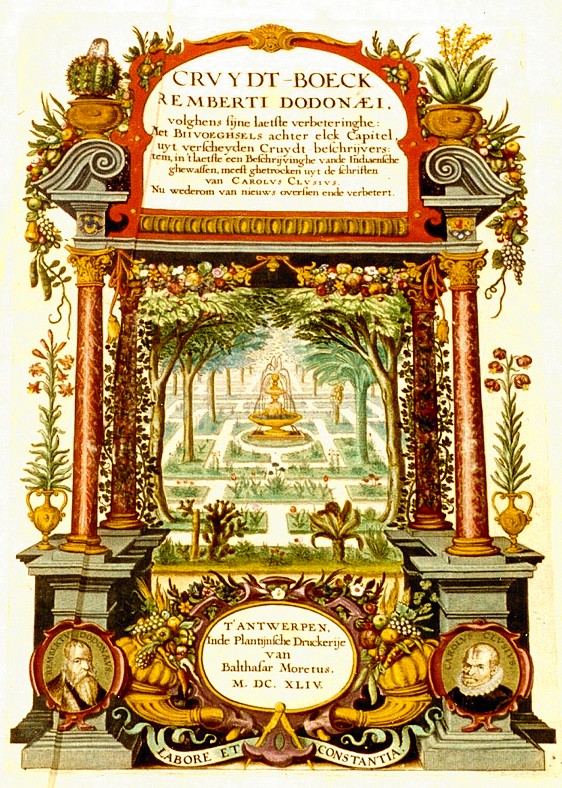
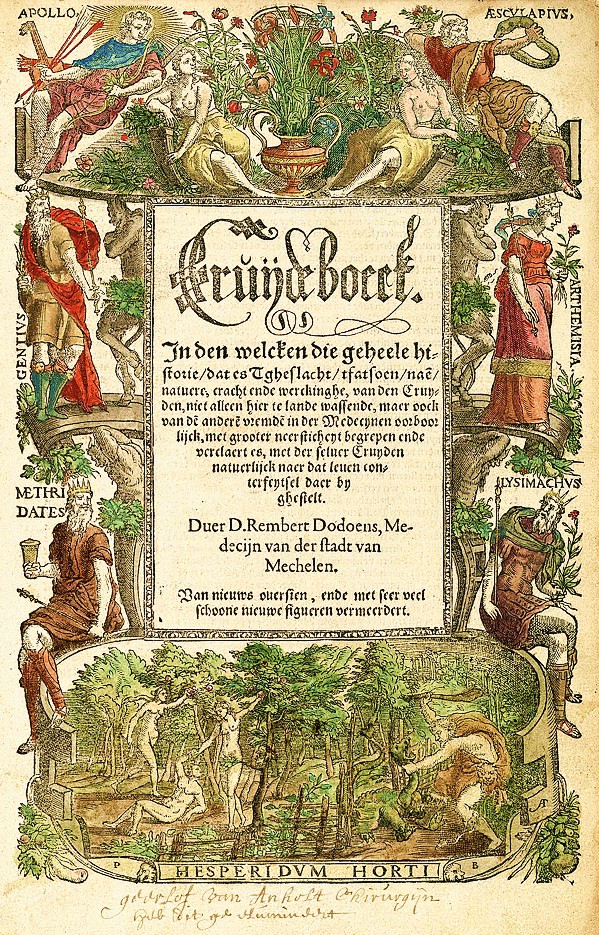
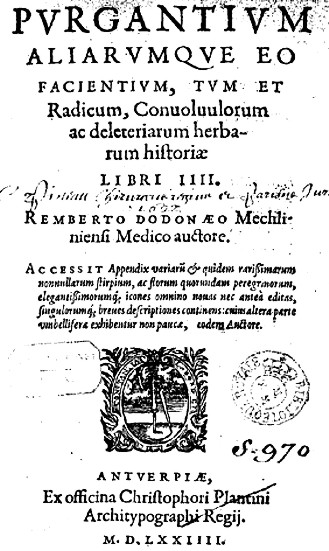

Rembert Dodoens (Mechelen June 29, 1517 – Leyden March 10, 1585) was a Flemish physician and botanist, also known under his Latinized name Rembertus Dodonaeus.
In 1530 he started his studies of medicine, cosmography and geography at the University of Leuven, where he graduated in 1535. He established himself as a physician in Mechelen in 1538. He married Kathelijne De Bruyn(e) in 1539. He had a short stay in Basel (1542-1546). He turned down a chair at the University of Leuven in 1557. He equally turned down an offer to become court physician of emperor Philip II of Spain. He became the court physician of the Austrian emperor Rudolph II in Vienna (1575-1578). He then became professor in medicine at the University of Leiden in 1582.
Dodoens' herbal Cruydeboeck with 715 images (1554) was influenced by that of Leonhart Fuchs. He divided the plant kingdom in six groups. It treated in detail especially the medicinal herbs, which made this work, in the eyes of many, a pharmacopoeia.
It was
translated first into French in 1557 by Charles de L'Ecluse![]() (Histoire
des Plantes), into English (via L'Ecluse) in 1578 by Henry Lyte (A new
herbal, or historie of plants), and later into Latin in 1583. In his times,
it was the most translated book after the Bible. It became a work of worldwide
renown, used as a reference book for two centuries.
(Histoire
des Plantes), into English (via L'Ecluse) in 1578 by Henry Lyte (A new
herbal, or historie of plants), and later into Latin in 1583. In his times,
it was the most translated book after the Bible. It became a work of worldwide
renown, used as a reference book for two centuries.
Dodoens's last book, Stirpium historiae pemptades sex (1583) was the Latin translation of his Cruydeboeck. It was used as a source by John Gerard for his Herball.
Dodoens
is commemorated in the plant genus Dodonaea![]() , which
was named after him by Carolus Linnaeus. Dodoens indicates Rembert Dodoens
when citing a botanical name.
, which
was named after him by Carolus Linnaeus. Dodoens indicates Rembert Dodoens
when citing a botanical name.
Selected
works
Herbarium
(1533)
Den Nieuwen Herbarius (1543)
Cosmographica in astronomiam et geographiam isagoge (1548)
De frugum historia (1552)
Trium priorum de stirpium historia commentariorum imagines (1553)
Posteriorum trium de stirpium historia commentariorum imagines (1554)
Cruydeboeck (1554)
Physiologices medicinae tabulae (1580)
Medicinalium observationum exempla rara (1581)
Stirpium historiae pemptades sex (1583)
Praxis medica (1616) (posthumous)
Ars medica, ofte ghenees-kunst (1624) (posthumous)
Dodonaea is a genus of about 70 species of flowering plants in the family Sapindaceae, with a cosmopolitan distribution in tropical, subtropical and warm temperate regions of Africa, the Americas, southern Asia and Australasia. By far the highest species diversity is in Australia. They are shrubs and small trees growing to 1-5 m tall. The leaves are alternate, simple or pinnate. The flowers are produced in short racemes. The fruit is a capsule, often with two or three wings. The genus is named after Rembert Dodoens, also known as Rembertus Dodonaeus.
Dodonaea angustifolia
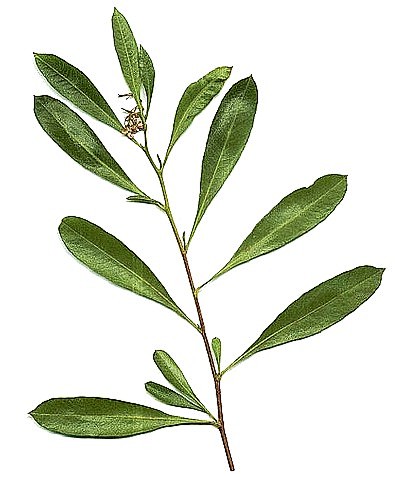
The Sand olive is a slender shrub or small tree that occurs naturally from southern Africa to Arabia, as well as in Australia and New Zealand. The seed capsules are three-winged and are dispersed by wind. Although naturally occurring in rocky areas it is also cultivated to stabilise moving sand and to prevent erosion. Extracts are used as medicine.
Dodonaea sinuolata
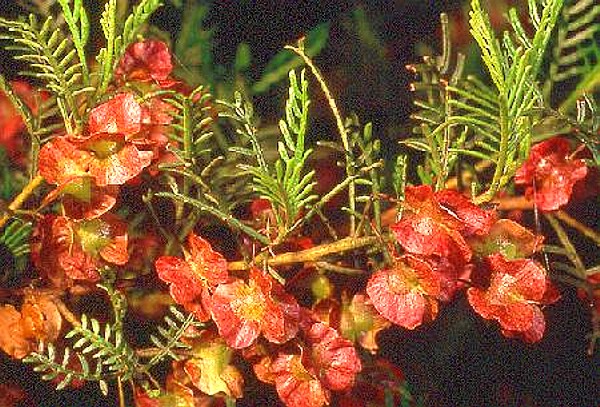
Dodonaea triquetra
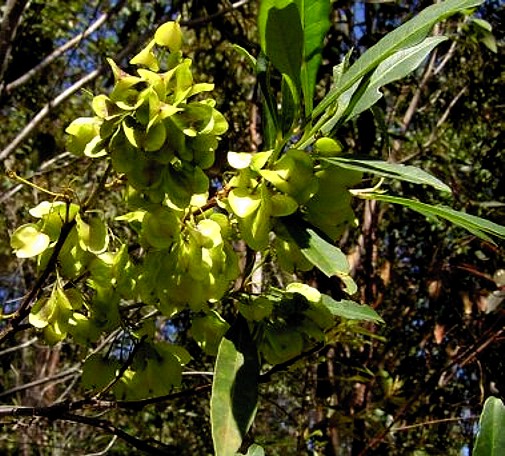
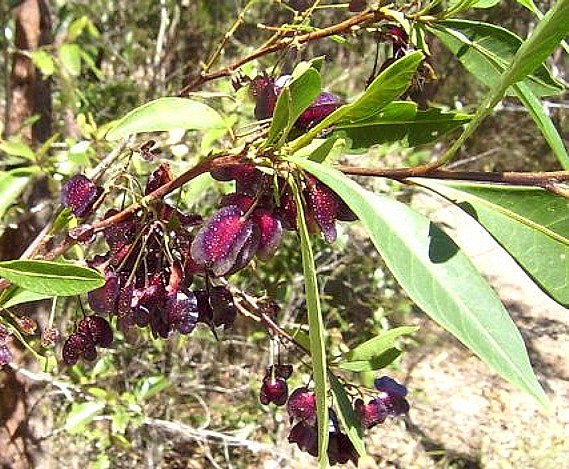
Dodonaea viscosa
